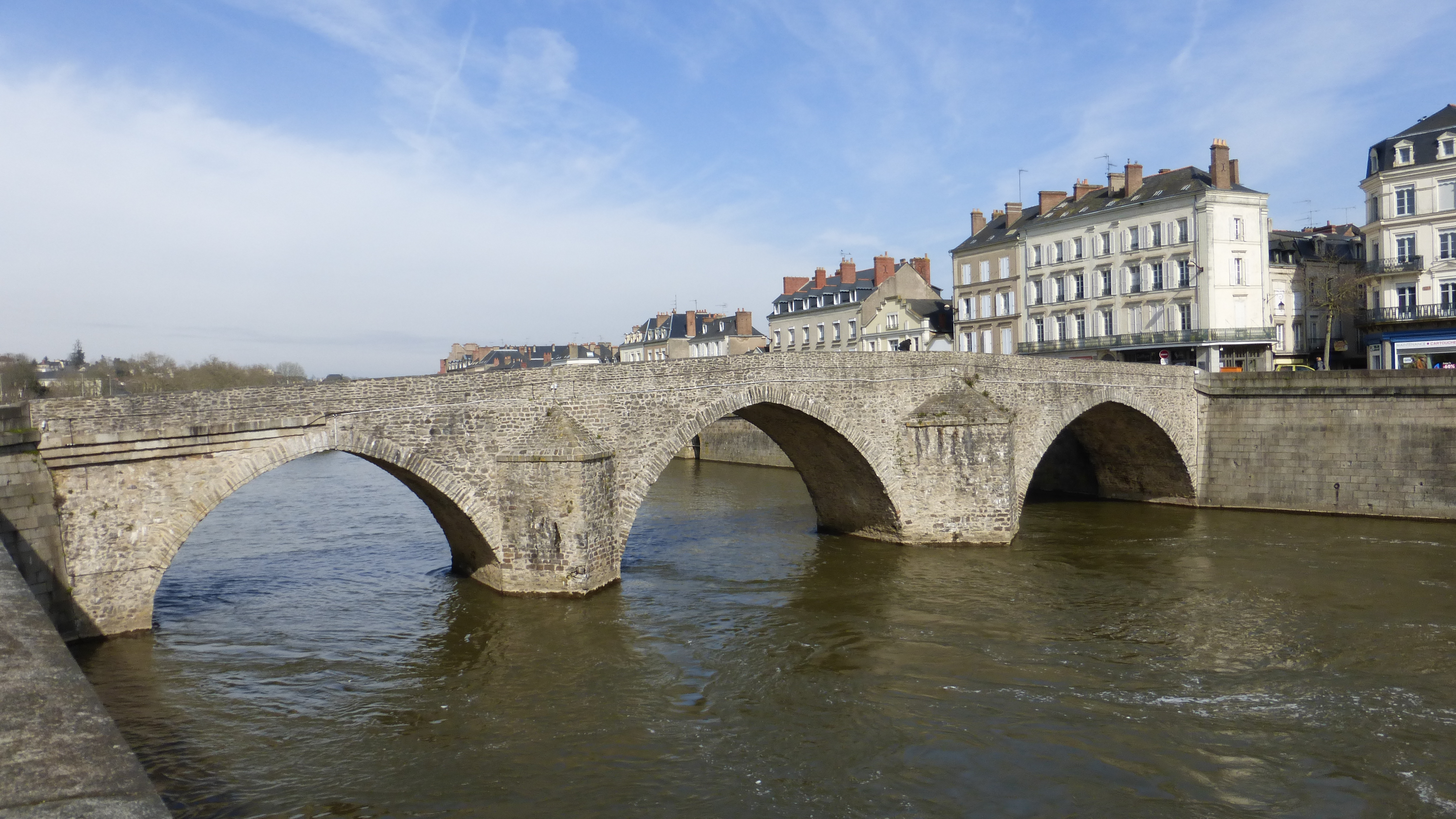 After visiting Chailland, it was off to the capital city of the Mayenne, Laval. Parked the car next to the cathedral and walked down the hill to the tourist office in order to get a map of the town. Unfortunately, the map they provided was one of the worst I’ve ever seen. Nearly everything was mismarked and street names were missing. Half the time I was walking in the wrong direction. I think I would have done better finding all of the tourist sites wearing a blindfold. However, I can’t find fault with anything else in this lovely town. There are so many wonderful places to visit.
After visiting Chailland, it was off to the capital city of the Mayenne, Laval. Parked the car next to the cathedral and walked down the hill to the tourist office in order to get a map of the town. Unfortunately, the map they provided was one of the worst I’ve ever seen. Nearly everything was mismarked and street names were missing. Half the time I was walking in the wrong direction. I think I would have done better finding all of the tourist sites wearing a blindfold. However, I can’t find fault with anything else in this lovely town. There are so many wonderful places to visit. 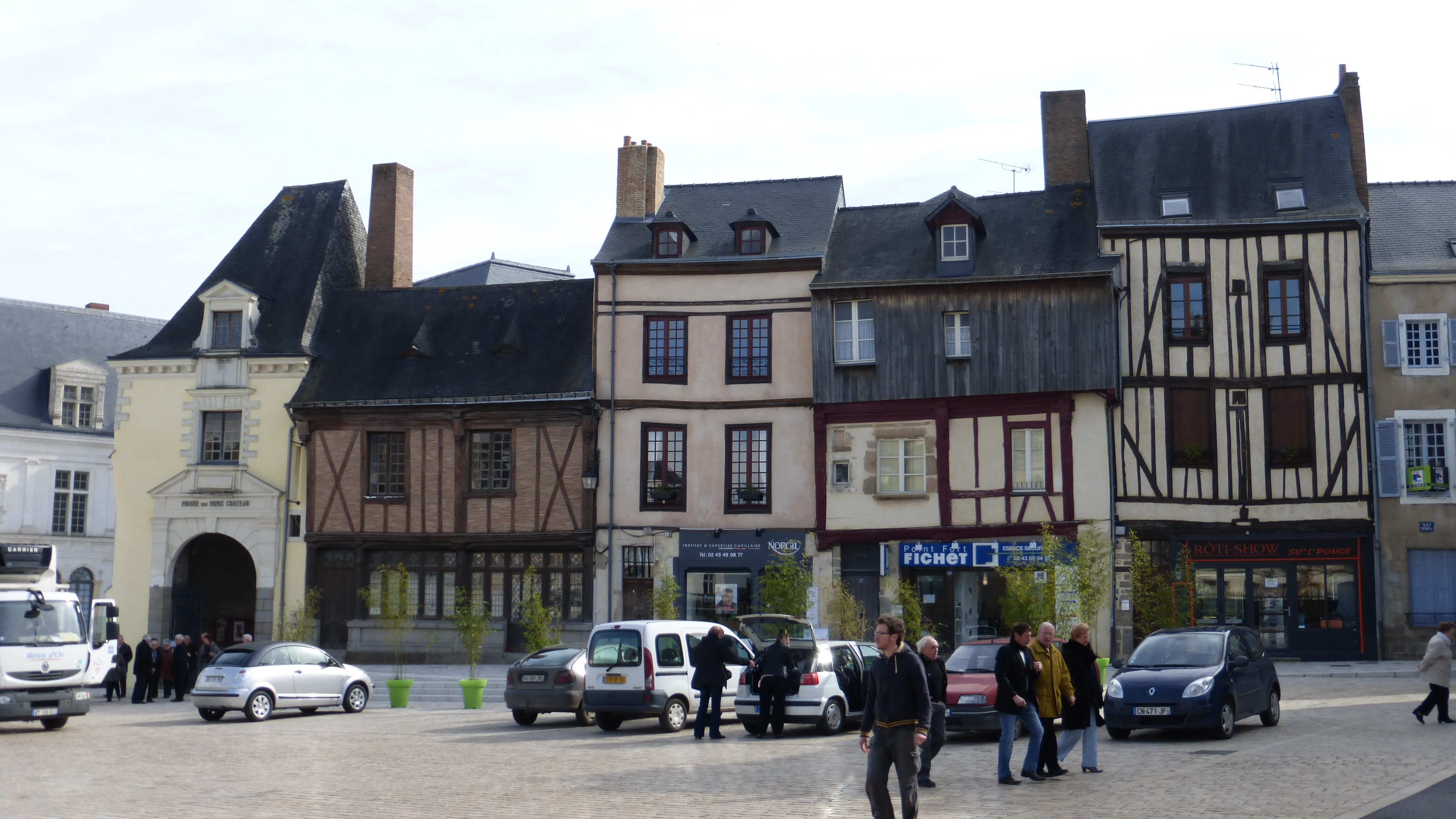
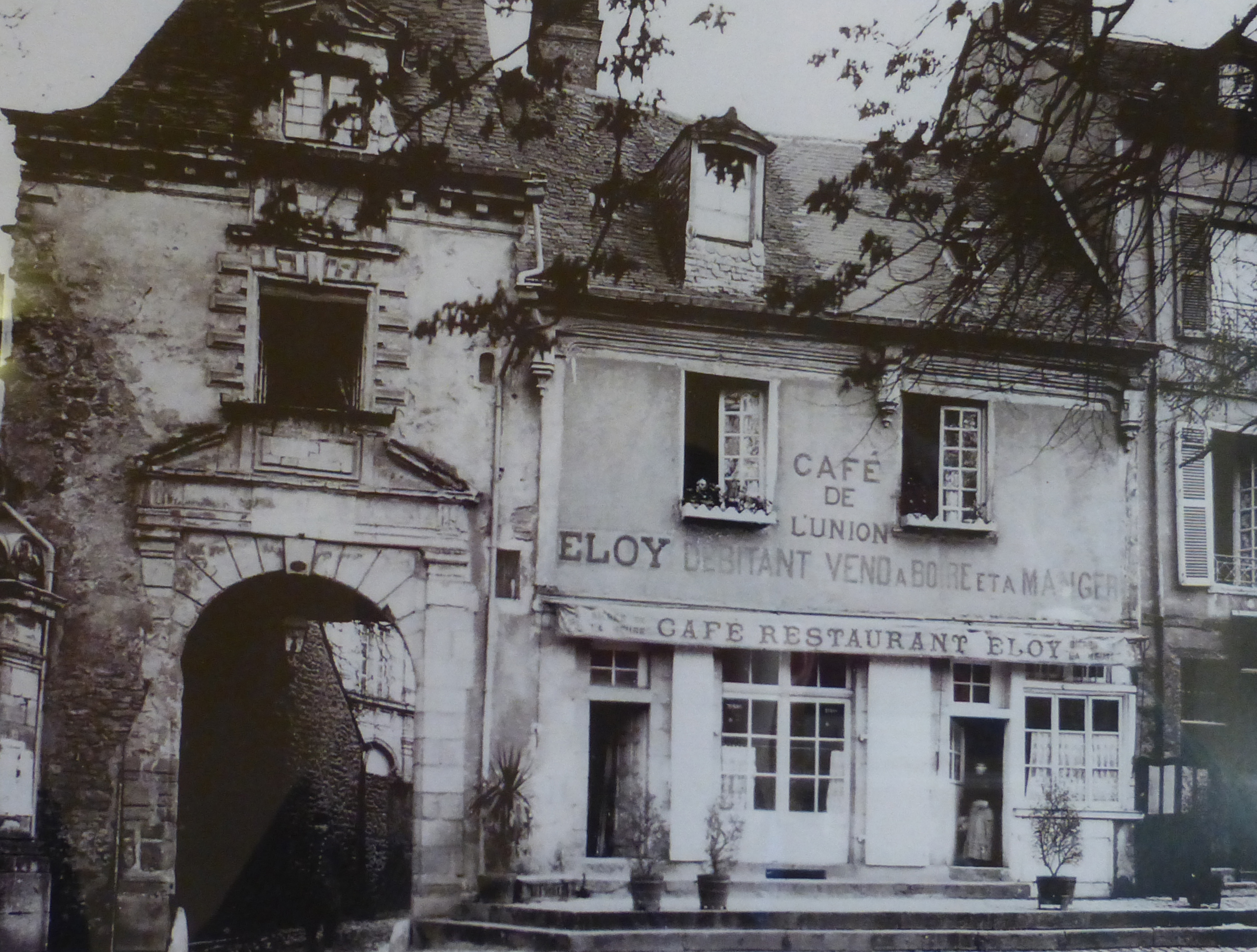
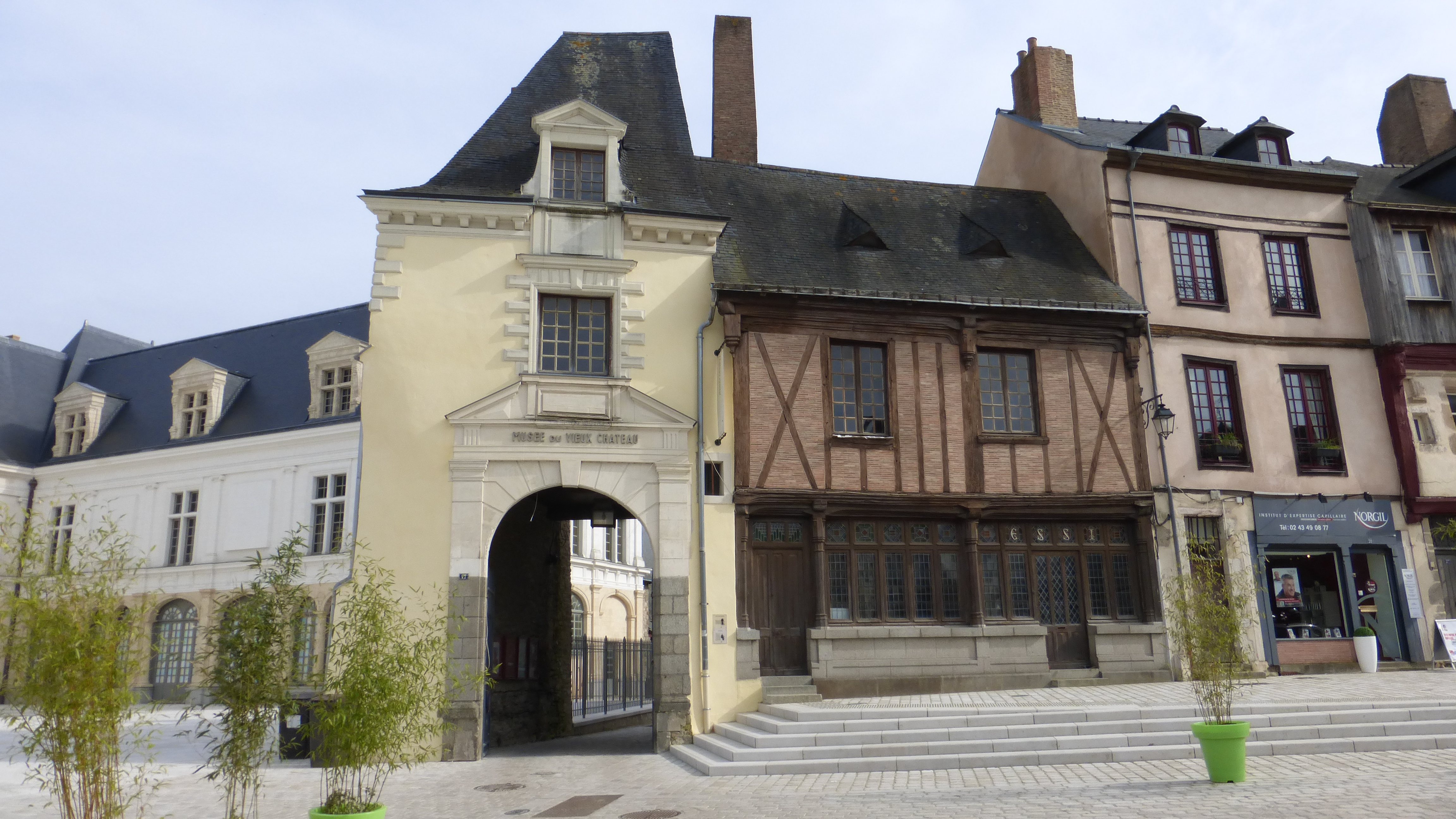 This is the Place de la Trémoille, named after the last of the local lords. The house next to the archway which leads to the castle is known as Maison Pierre Briand and dates from 1469. There are other interesting half-timbered houses that face the square as well as the famous Grande-Rue within the old town.
This is the Place de la Trémoille, named after the last of the local lords. The house next to the archway which leads to the castle is known as Maison Pierre Briand and dates from 1469. There are other interesting half-timbered houses that face the square as well as the famous Grande-Rue within the old town.  On the east side stands the Renaissance façade of the Nouveau Château built in the 16th century as the residence of the Count of Laval; it was enlarged in the 19th century and now houses the law courts.
On the east side stands the Renaissance façade of the Nouveau Château built in the 16th century as the residence of the Count of Laval; it was enlarged in the 19th century and now houses the law courts. 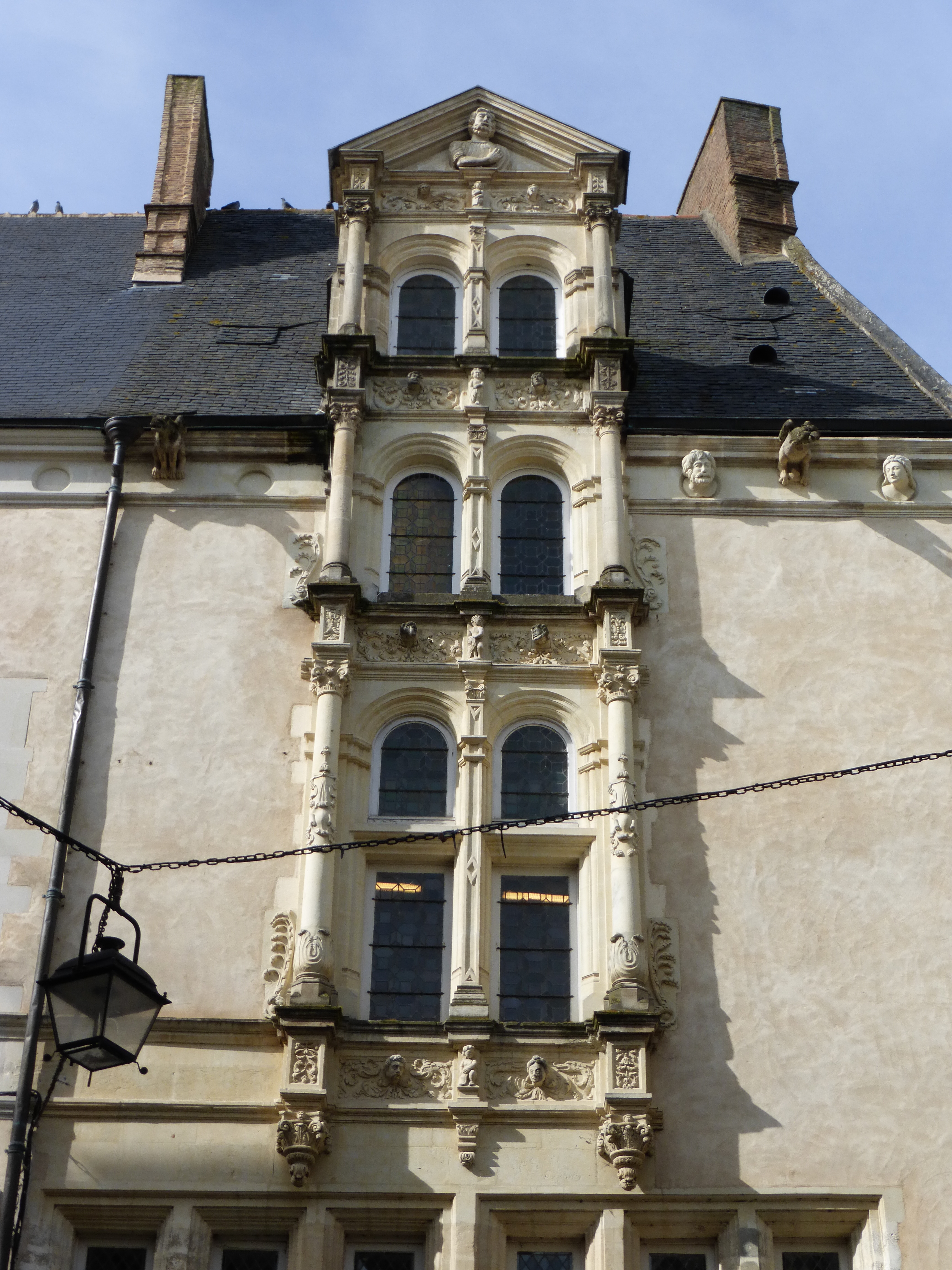 Nearby is the Renaissance house from 1550 of the Master of the Royal Hunt (Grand Veneur); the façade and the windows in carved tufa are similar to those as the château.
Nearby is the Renaissance house from 1550 of the Master of the Royal Hunt (Grand Veneur); the façade and the windows in carved tufa are similar to those as the château. 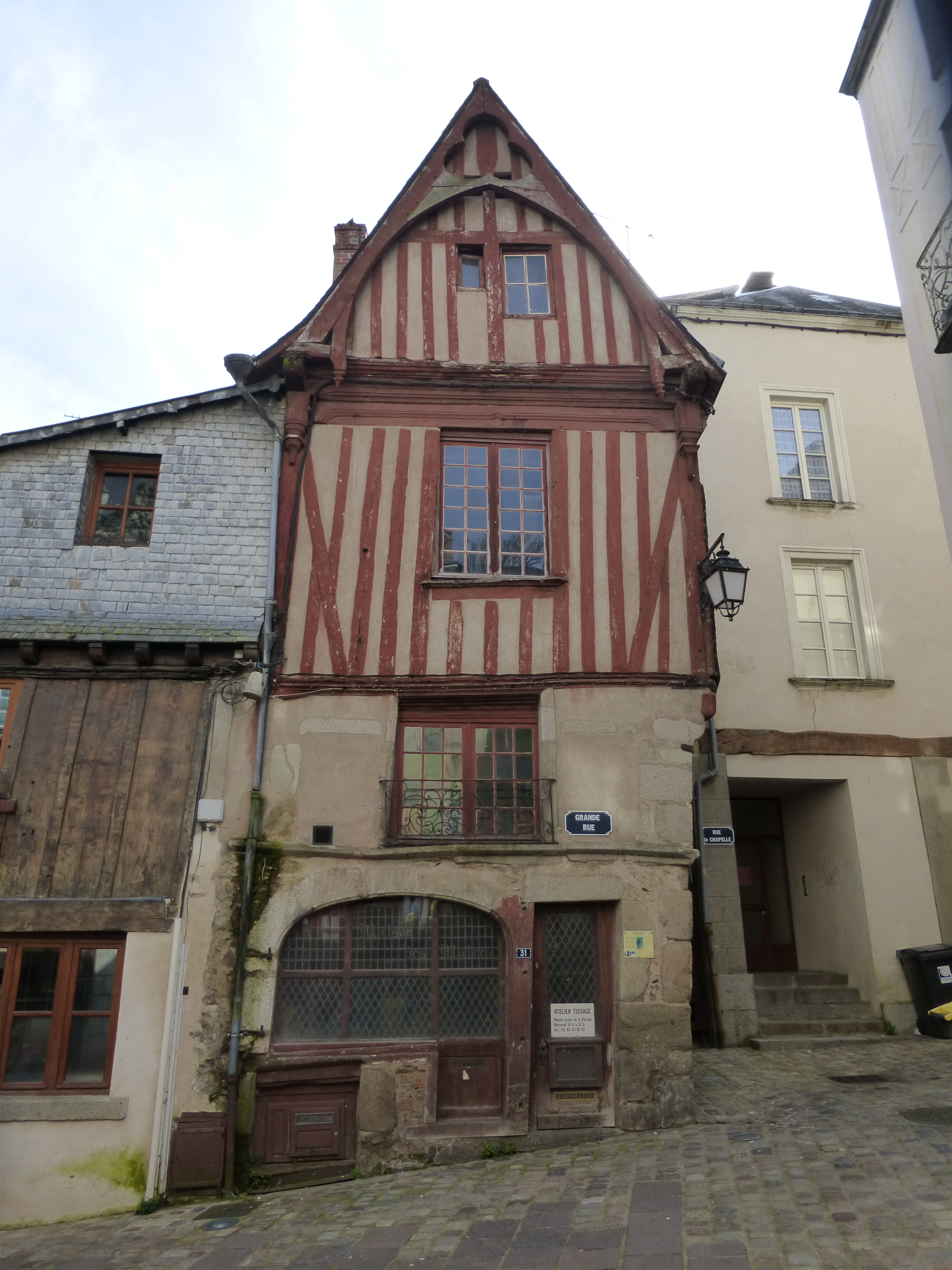 Laval still has many of its original half-timbered houses including this one called the Maison des Maires, built between 1471 and 1477.
Laval still has many of its original half-timbered houses including this one called the Maison des Maires, built between 1471 and 1477.  Just in front of it is the Maison du Pou Volant which was built in 1423 and was once a hospice for poor and needy people. It is considered one of the oldest houses in the west of France. Along the rue de la Trinité another set of remarkable half-timbered houses present themselves.
Just in front of it is the Maison du Pou Volant which was built in 1423 and was once a hospice for poor and needy people. It is considered one of the oldest houses in the west of France. Along the rue de la Trinité another set of remarkable half-timbered houses present themselves. 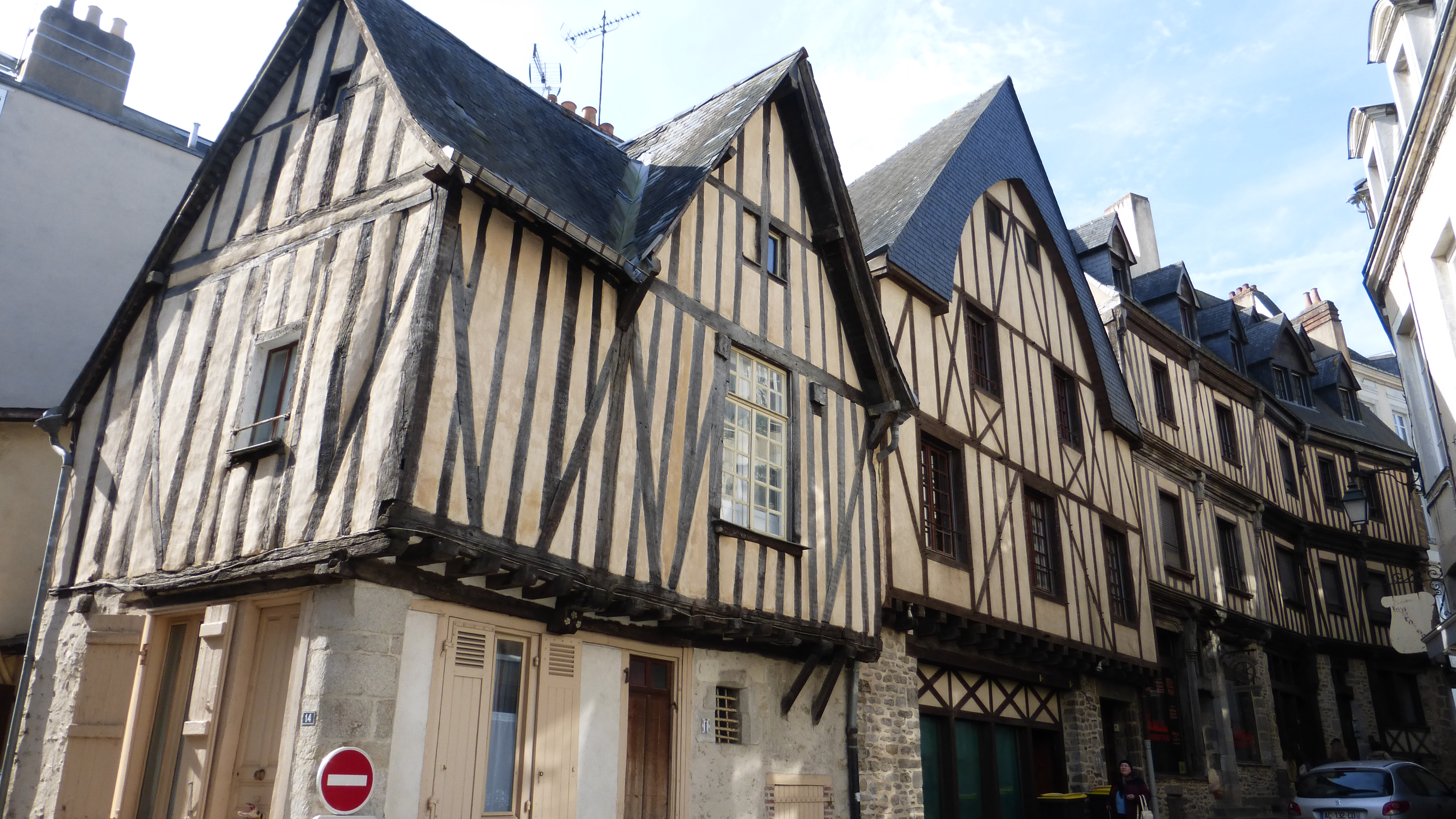 Among them in particular is the Hôtel de Clermont, the urban seat of a Cistercian abbey which offers a decorated façade of religious sculptures including Saint-Benôit and Saint-Bernard as well as Saint-Christophe, Sainte-Barbe and the Virgin and Child.
Among them in particular is the Hôtel de Clermont, the urban seat of a Cistercian abbey which offers a decorated façade of religious sculptures including Saint-Benôit and Saint-Bernard as well as Saint-Christophe, Sainte-Barbe and the Virgin and Child. 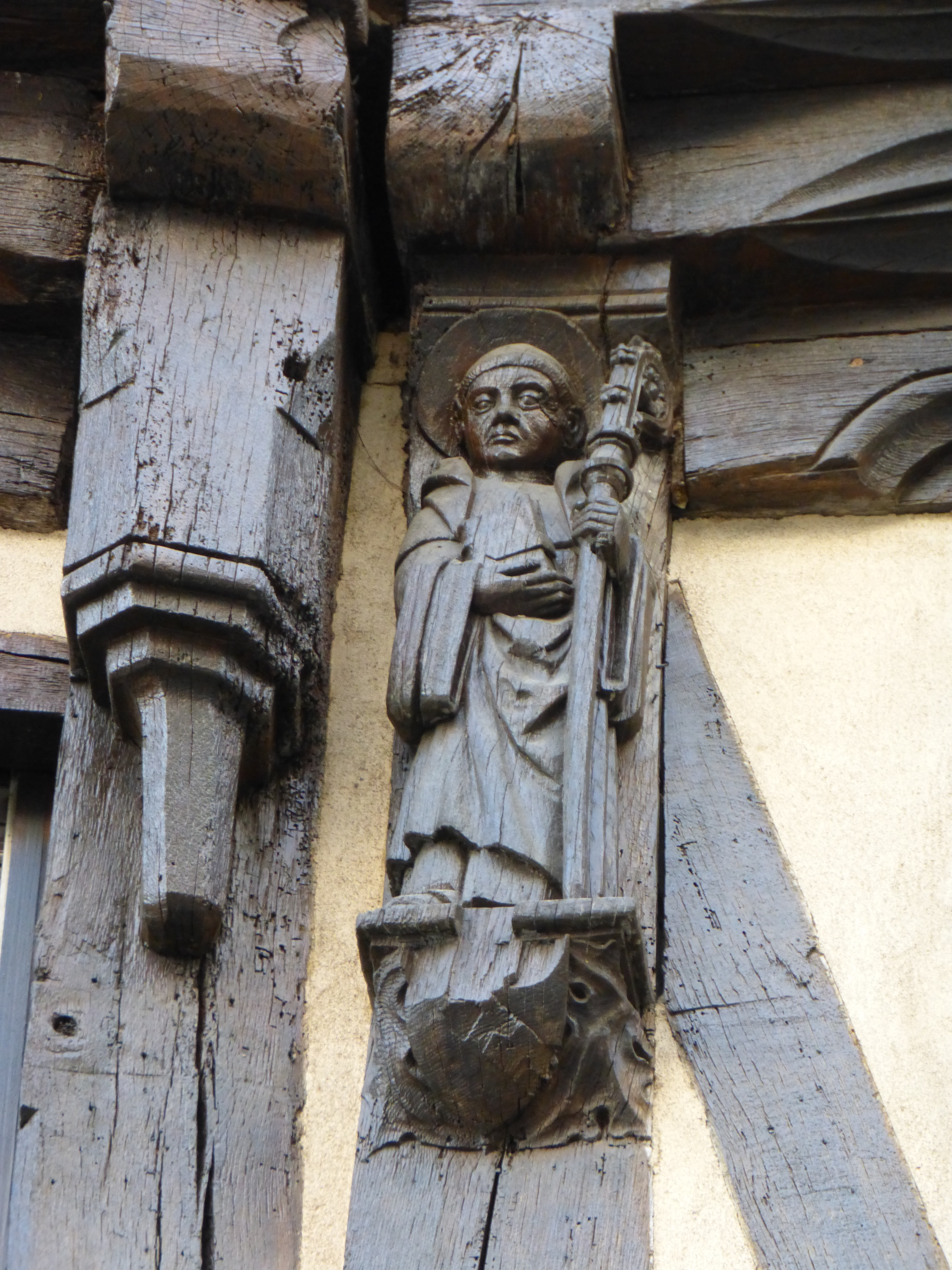 They were meant as protection for the residents of the house as well as those living on this city block.
They were meant as protection for the residents of the house as well as those living on this city block.  This house along the Grande-Rue has recently been restored and is dedicated to Saint-René—his small statue rests in a niche in the corner.
This house along the Grande-Rue has recently been restored and is dedicated to Saint-René—his small statue rests in a niche in the corner. 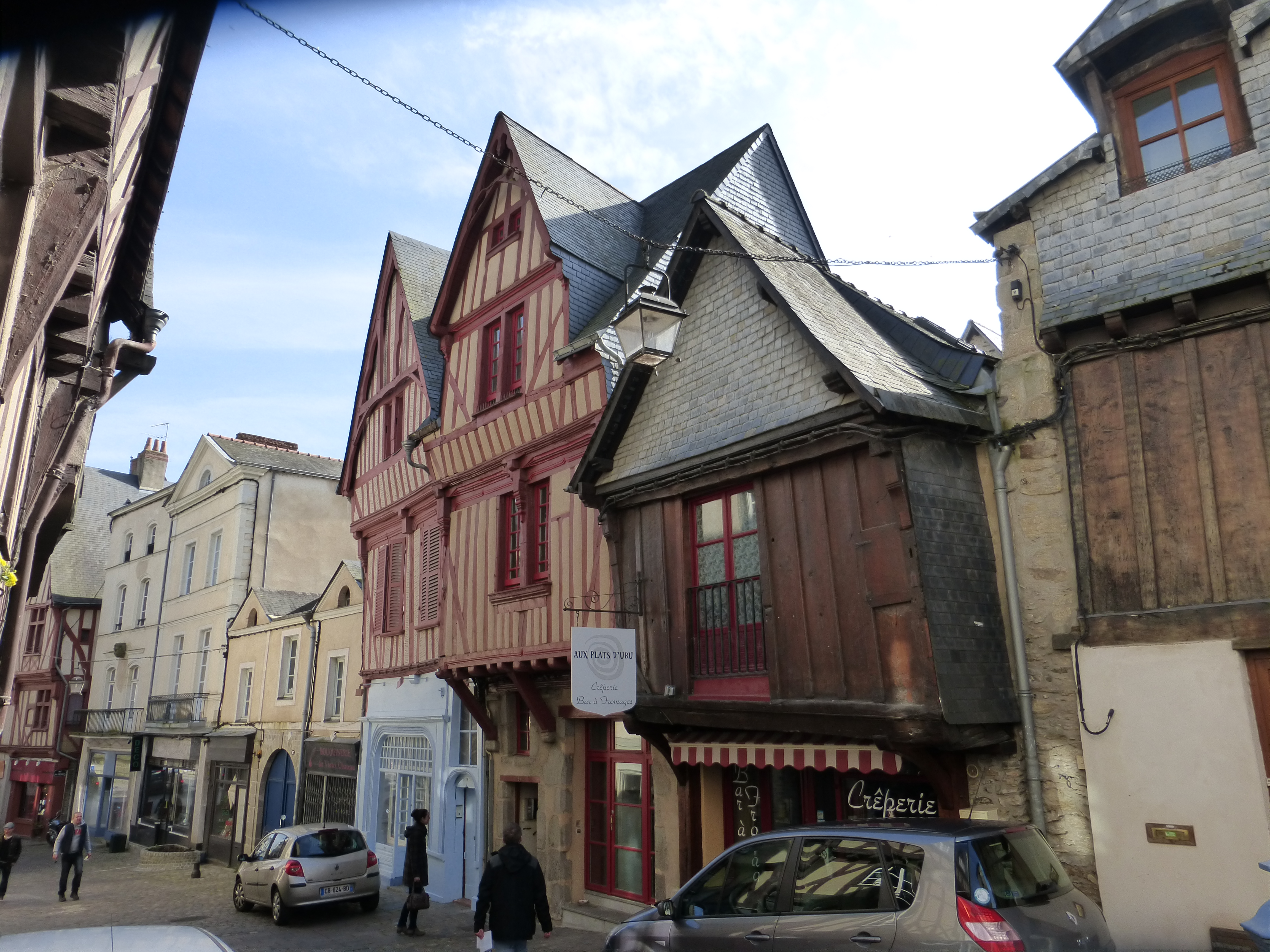 These particular sets of houses along the Grande-Rue were my favorite.
These particular sets of houses along the Grande-Rue were my favorite. 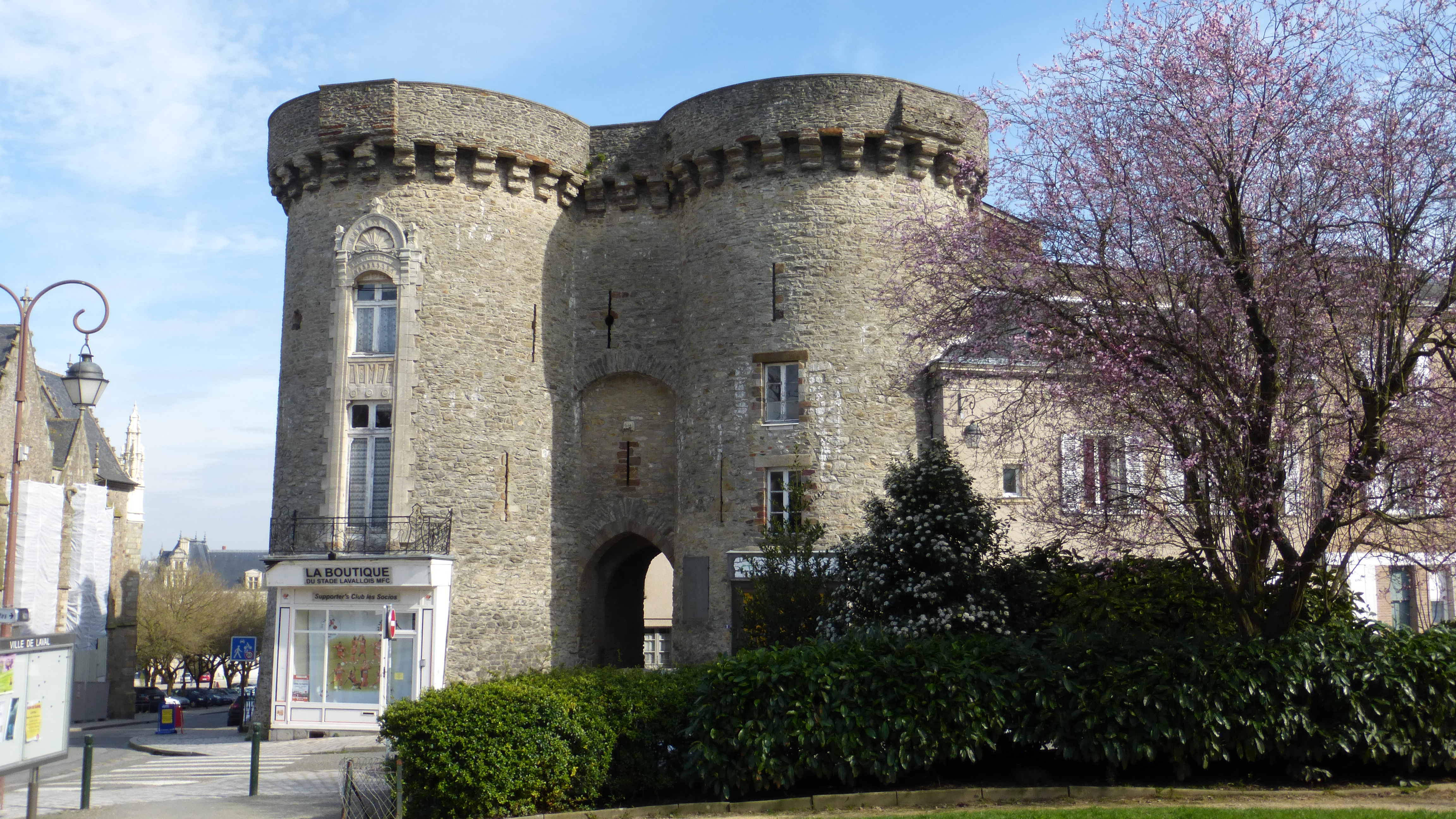 This is the Porte Beucheresse. In former days this gate, then called Porte des Bûcherons, or gate of the woodcutters opened directly into the forest (for this was where wood from the forest was brought into the city each day). It was built in the 14th century with a pointed entrance arch and is flanked by two round towers, topped with machicolations, which were once part of the town walls of Laval. Henri Rousseau was born in the south tower where his father exercised his trade as a tinsmith.
This is the Porte Beucheresse. In former days this gate, then called Porte des Bûcherons, or gate of the woodcutters opened directly into the forest (for this was where wood from the forest was brought into the city each day). It was built in the 14th century with a pointed entrance arch and is flanked by two round towers, topped with machicolations, which were once part of the town walls of Laval. Henri Rousseau was born in the south tower where his father exercised his trade as a tinsmith. 
 Laval still has many traces of its ancient fortifications throughout the city including this section of the southern ramparts and the 15th century Tour Renaise. Not far from the Tour Renaise is the Church of St-Martin.
Laval still has many traces of its ancient fortifications throughout the city including this section of the southern ramparts and the 15th century Tour Renaise. Not far from the Tour Renaise is the Church of St-Martin.  Just outside of the medieval town, Guy, the first lord of Laval allowed monks from Tours to create a priory dedicated to Saint-Martin in 1040. This very old church is now closed to the public but its interiors hold some very well preserved frescoes dating from the 12th to 17th centuries. Across the street from la Porte Beucheresse is the Cathédrale de la Sainte-Trinité.
Just outside of the medieval town, Guy, the first lord of Laval allowed monks from Tours to create a priory dedicated to Saint-Martin in 1040. This very old church is now closed to the public but its interiors hold some very well preserved frescoes dating from the 12th to 17th centuries. Across the street from la Porte Beucheresse is the Cathédrale de la Sainte-Trinité. 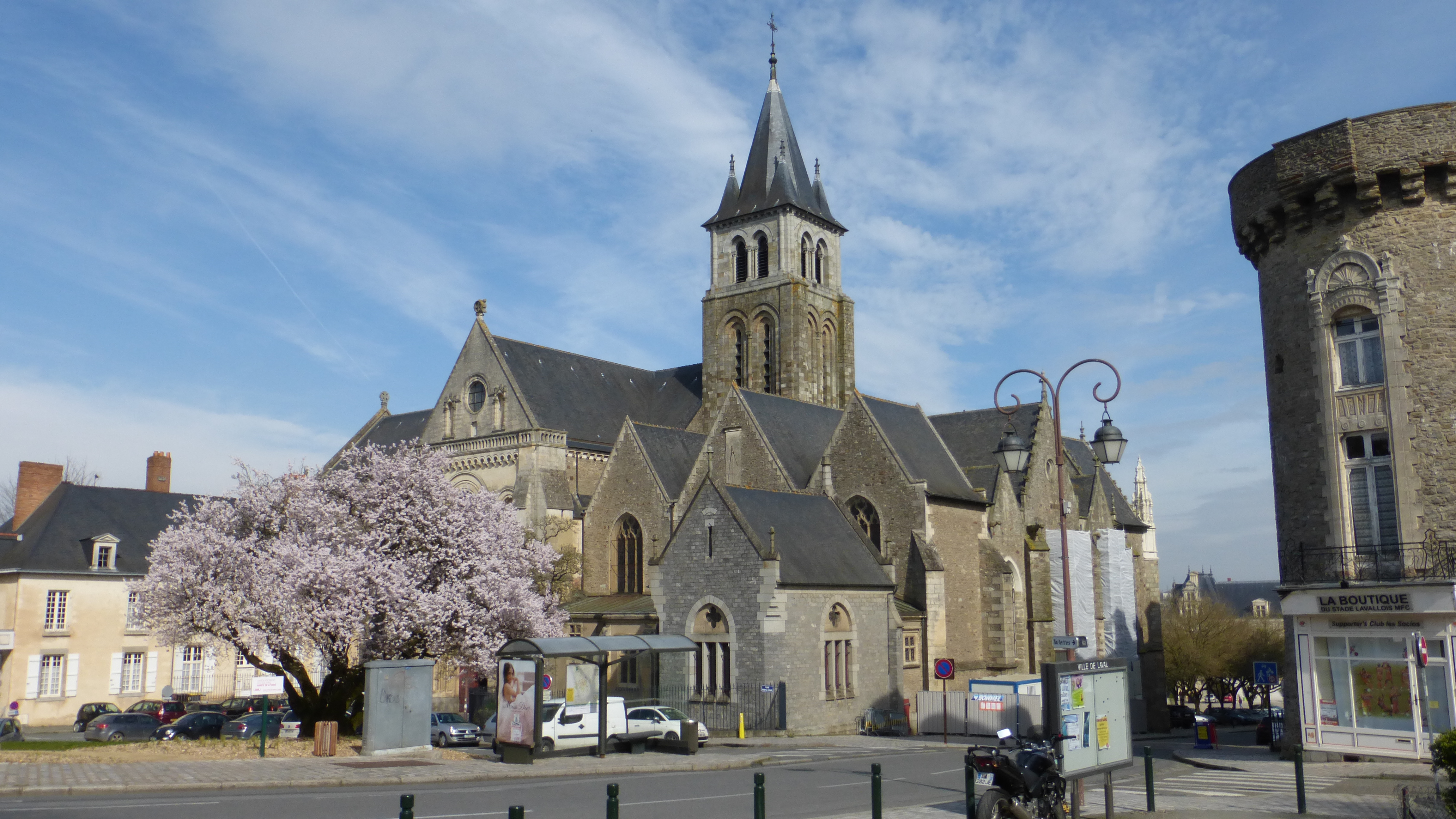 It was begun in the 11th century but has been altered so many times over the centuries that it wasn’t until the 19th that it received its current aspect.
It was begun in the 11th century but has been altered so many times over the centuries that it wasn’t until the 19th that it received its current aspect.  The walls are hung with early 17th century Aubusson tapestries depicting the story of Judith and Holophernes in six panels.
The walls are hung with early 17th century Aubusson tapestries depicting the story of Judith and Holophernes in six panels.  Walking up towards the nave, on the left is the tomb of Guillaume Ouvroin, once bishop of Rennes, who was born in Laval and died in 1347. The recumbent figure is made of Carrara marble.
Walking up towards the nave, on the left is the tomb of Guillaume Ouvroin, once bishop of Rennes, who was born in Laval and died in 1347. The recumbent figure is made of Carrara marble. 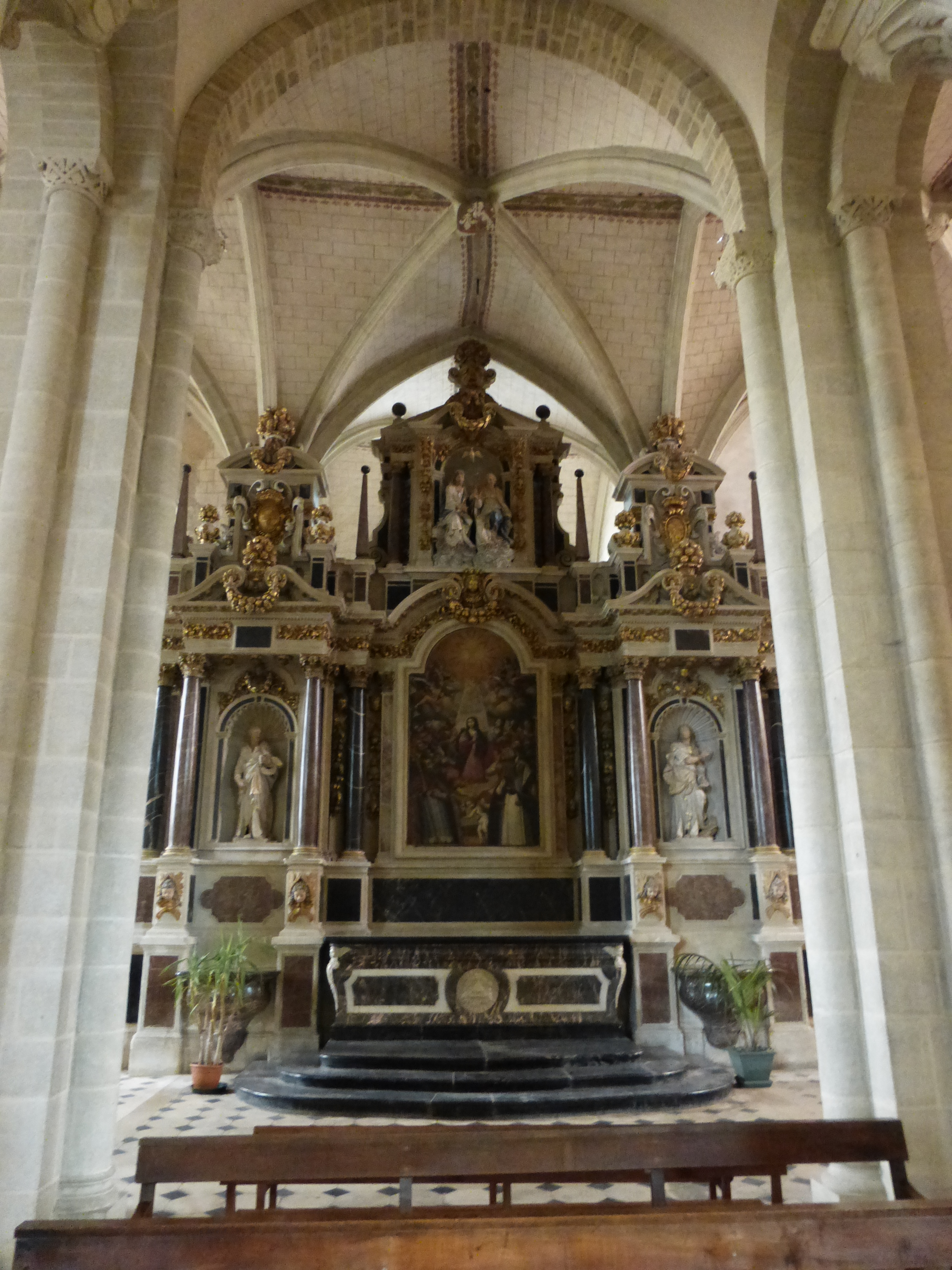 The large screen of the original main altar was built between 1634 and 1640 by the Laval architect, Corbineau. The central picture illustrates the mystery of the Holy Trinity. On either side are statues by the Anjou sculptor Biardeau of St-Peter and St-John the Apostle.
The large screen of the original main altar was built between 1634 and 1640 by the Laval architect, Corbineau. The central picture illustrates the mystery of the Holy Trinity. On either side are statues by the Anjou sculptor Biardeau of St-Peter and St-John the Apostle.  This is the recumbent figure of Monsignor Bougard, bishop of Laval in 1888. One of the more recent additions to the cathedral is the stained glass windows to the martyred priests of Laval.
This is the recumbent figure of Monsignor Bougard, bishop of Laval in 1888. One of the more recent additions to the cathedral is the stained glass windows to the martyred priests of Laval. 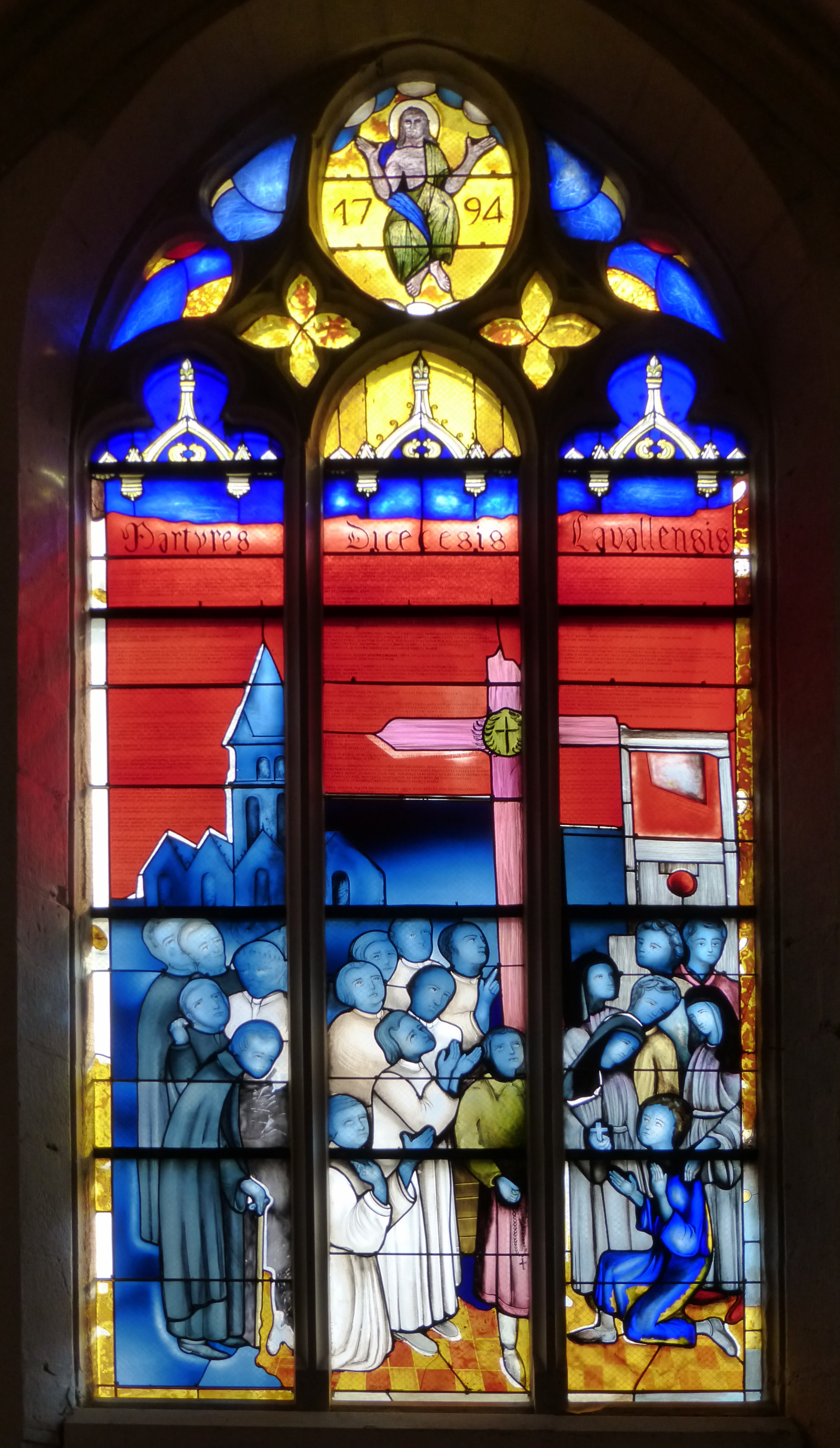 On January 21, 1794, these old or crippled priests could not be taken away so they were guillotined on the Trémoille Square near the old castle.
On January 21, 1794, these old or crippled priests could not be taken away so they were guillotined on the Trémoille Square near the old castle. 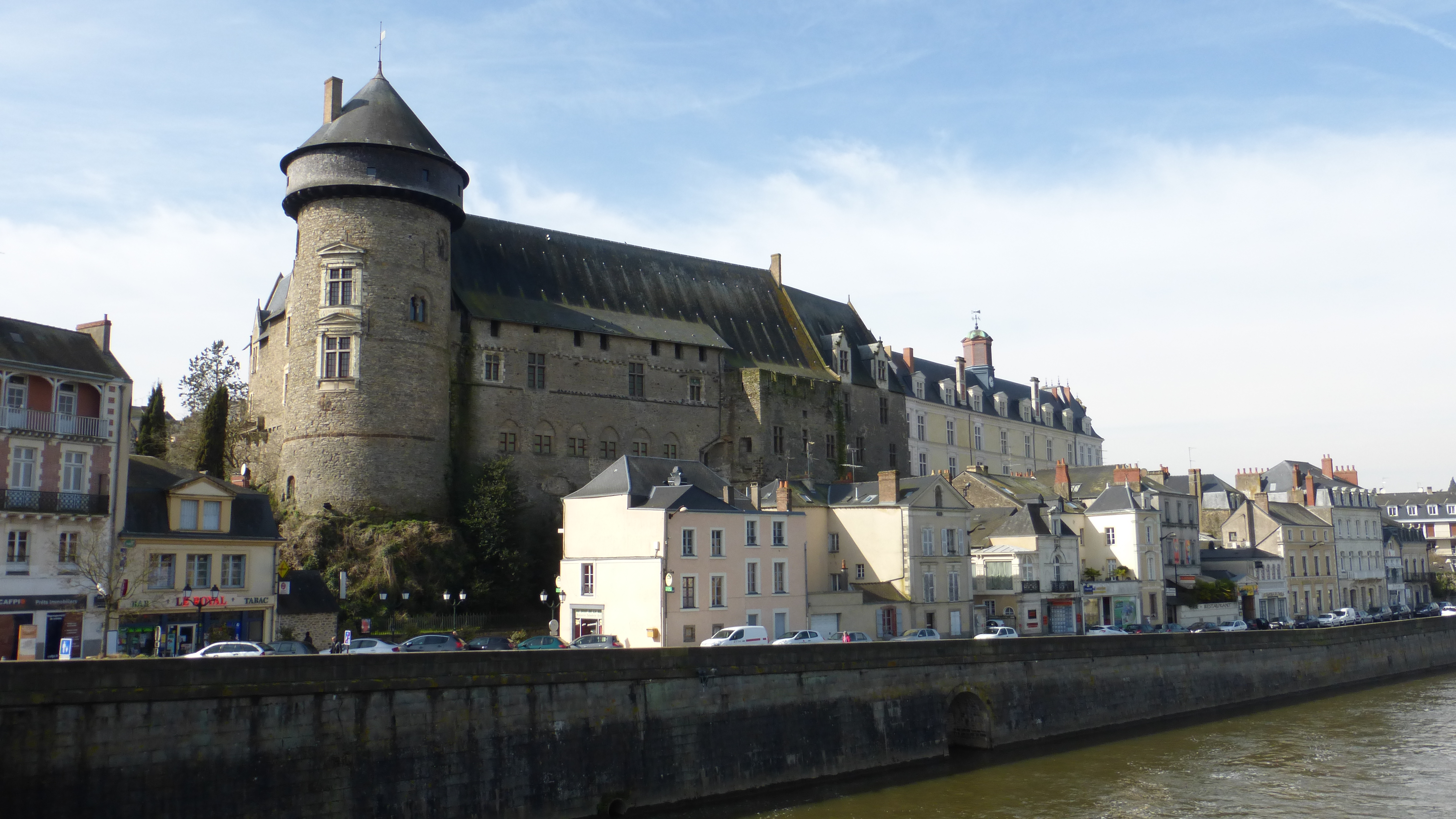 The Vieux Château, or Old Castle was originally built in 1020 when Guy de Denere established his residence there along an old Roman road that crossed the River Mayenne. The cylindrical tower was begun in the 13th century.
The Vieux Château, or Old Castle was originally built in 1020 when Guy de Denere established his residence there along an old Roman road that crossed the River Mayenne. The cylindrical tower was begun in the 13th century. 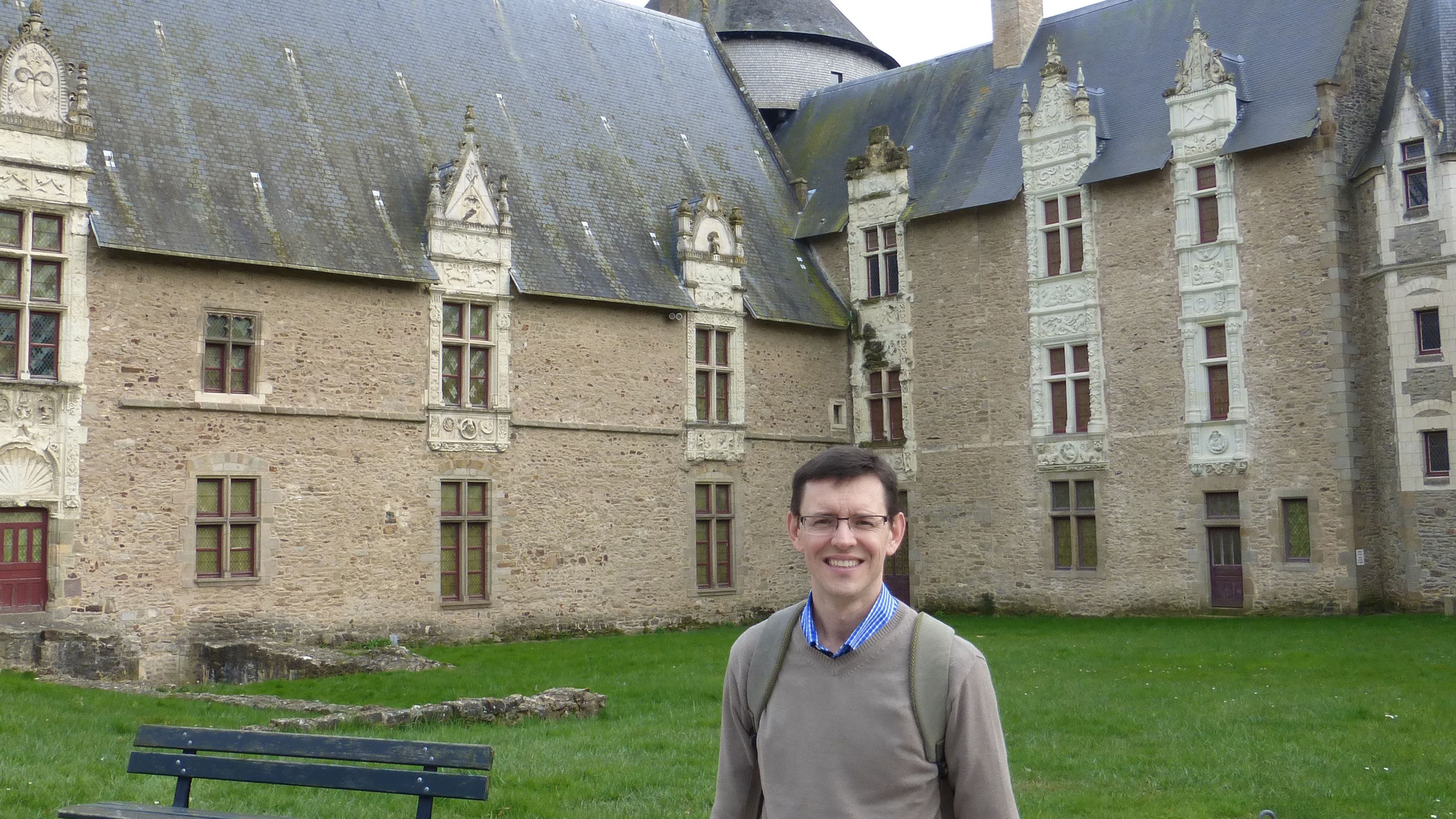 During the 16th century, new rooms and halls were built, and new Gothic windows were opened on the courtyard. The Vieux Château became Europe’s first museum dedicated to naïve art in 1967 featuring many works by local artist Henri Rousseau.
During the 16th century, new rooms and halls were built, and new Gothic windows were opened on the courtyard. The Vieux Château became Europe’s first museum dedicated to naïve art in 1967 featuring many works by local artist Henri Rousseau.  High above the town is the Jardin de la Perrine, created in 1920 by Jules Denier on land purchased in 1885 by the city from its previous owner, who lost it to gambling debts. The terraces of these huge public gardens command attractive views of the Mayenne, the lower town and the castle keep.
High above the town is the Jardin de la Perrine, created in 1920 by Jules Denier on land purchased in 1885 by the city from its previous owner, who lost it to gambling debts. The terraces of these huge public gardens command attractive views of the Mayenne, the lower town and the castle keep.  There is a nice view of the Eglise Saint-Pierre-Saint-Vénérand on the other side of the river. The first stone was laid by Guy XIV Count of Laval in 1485 but was enlarged several times over the centuries. The last part was restored in 1870 and enlarged once again in 1900 to accommodate the ever growing population of the city.
There is a nice view of the Eglise Saint-Pierre-Saint-Vénérand on the other side of the river. The first stone was laid by Guy XIV Count of Laval in 1485 but was enlarged several times over the centuries. The last part was restored in 1870 and enlarged once again in 1900 to accommodate the ever growing population of the city. 
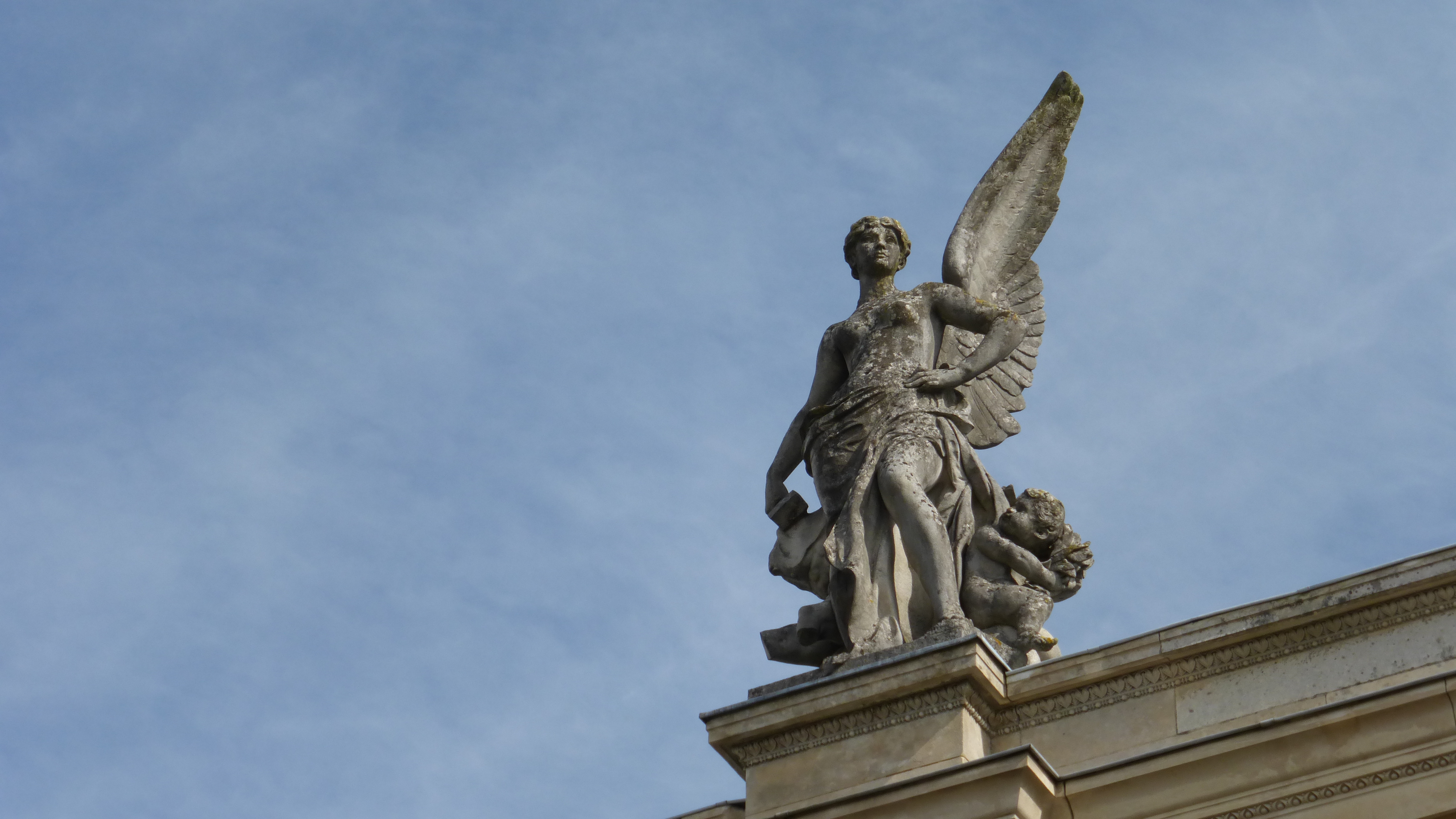
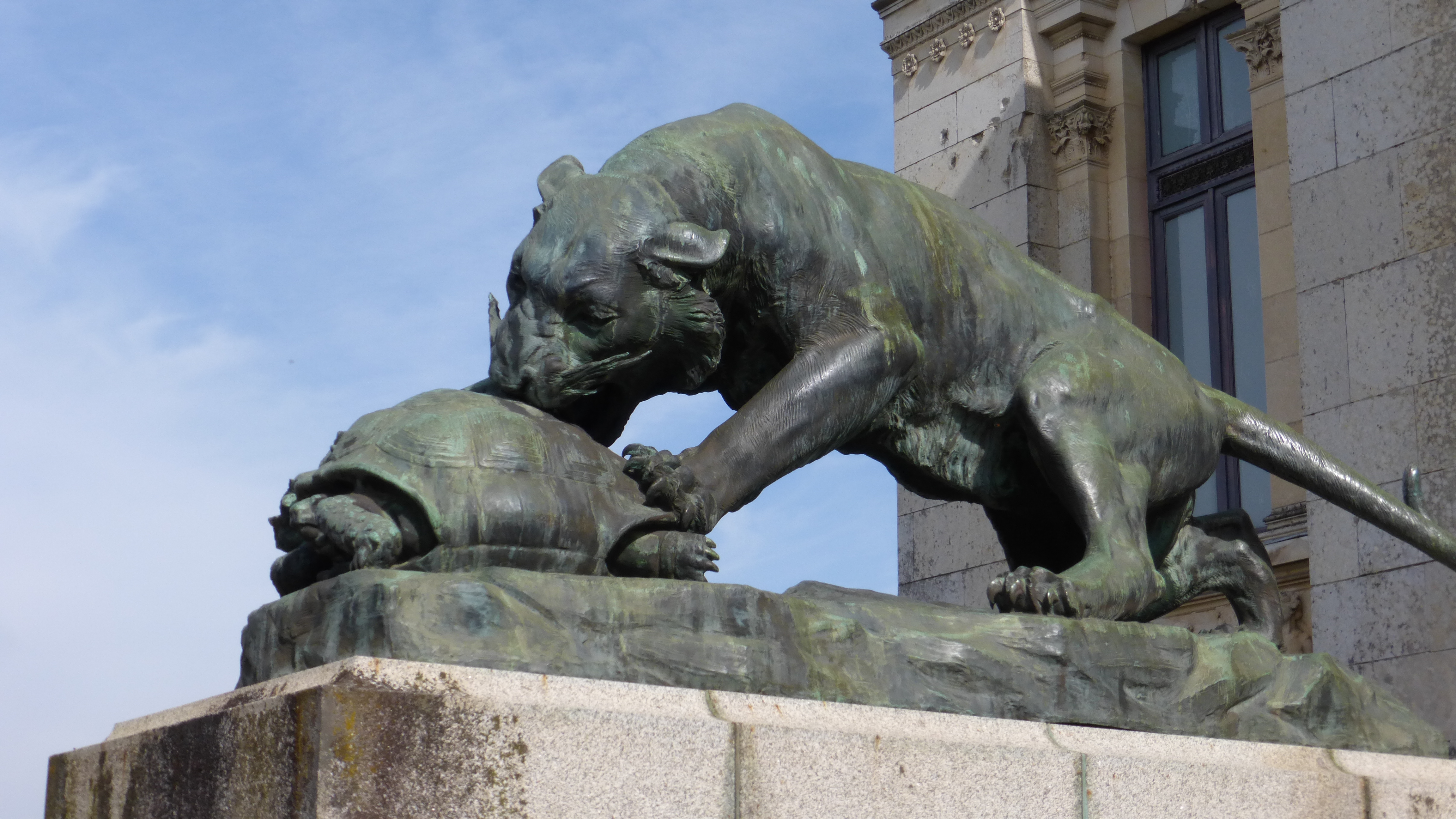 Also nearby is the Science Museum, formerly the Beaux-Arts Museum built in the late 19th century in the neoclassical style. The exterior is really something to see with two large bronze statues on either side of the stairs, one featuring a tiger attacking a tortoise and the other a bison being attacked by a jaguar. The main building is also ornamented with bas-reliefs depicting the birth of Venus and Agriculture.
Also nearby is the Science Museum, formerly the Beaux-Arts Museum built in the late 19th century in the neoclassical style. The exterior is really something to see with two large bronze statues on either side of the stairs, one featuring a tiger attacking a tortoise and the other a bison being attacked by a jaguar. The main building is also ornamented with bas-reliefs depicting the birth of Venus and Agriculture. 
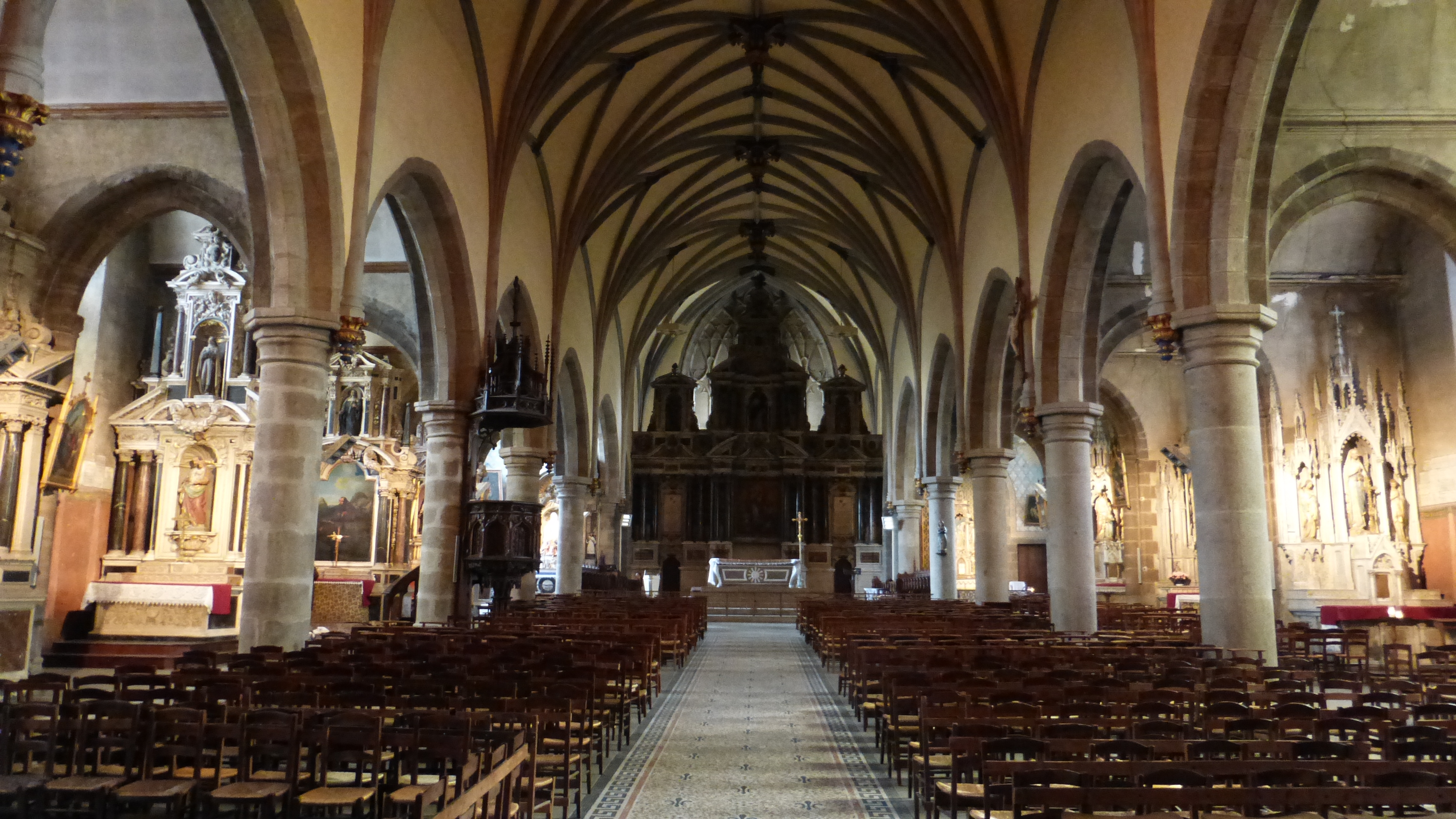 This is the Eglise Notre-Dame-des-Cordeliers built between 1397 and 1407. It was formerly a chapel of a Franciscan Monastery and contains a remarkable set of seven altarpieces from the 17th century. They were carved out of tufa and marble by the local architect Pierre Corbineau.
This is the Eglise Notre-Dame-des-Cordeliers built between 1397 and 1407. It was formerly a chapel of a Franciscan Monastery and contains a remarkable set of seven altarpieces from the 17th century. They were carved out of tufa and marble by the local architect Pierre Corbineau.  The large altarpiece over the main altar is also believed to be by Corbineau.
The large altarpiece over the main altar is also believed to be by Corbineau. 
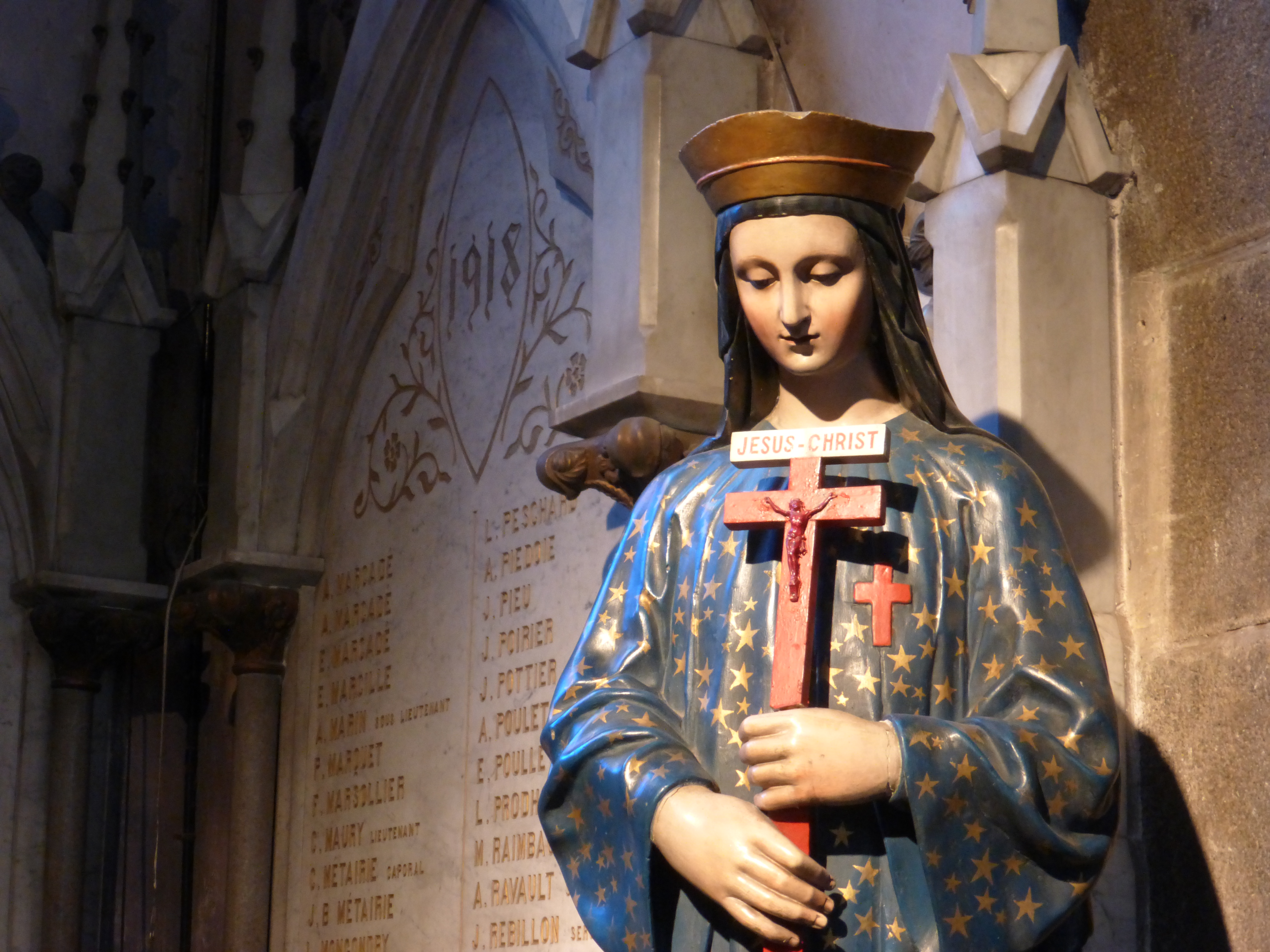 One of the 19th century side chapels is dedicated to Our Lady of Pontmain. This is the St-Julien, one of the last remaining bateaux-lavoirs or washing boats in Laval.
One of the 19th century side chapels is dedicated to Our Lady of Pontmain. This is the St-Julien, one of the last remaining bateaux-lavoirs or washing boats in Laval. 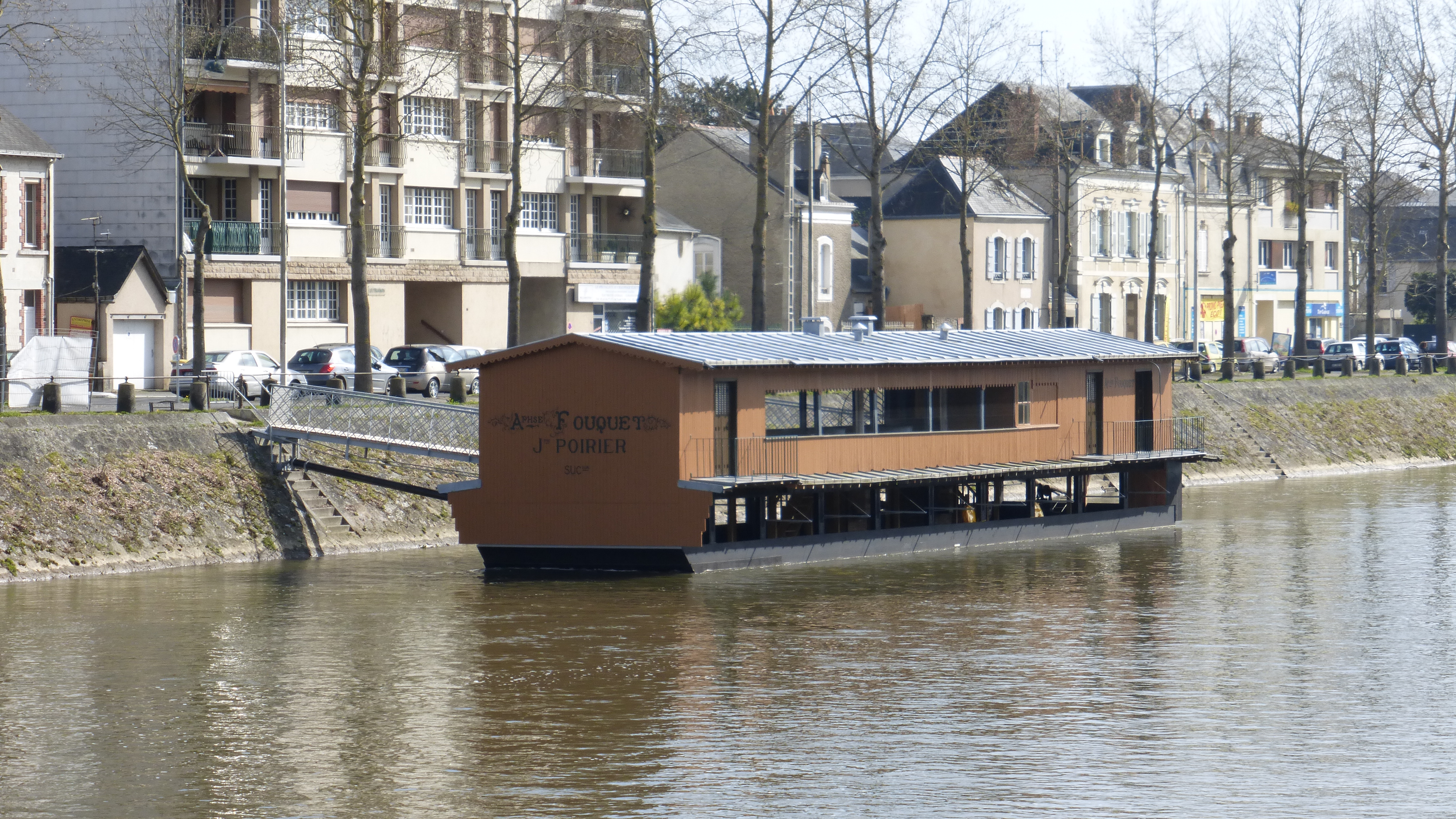 They resembled landing stages surrounded by washboards where the housewives came to beat their linin and rinse it in the running water. In the center were enormous vats for boiling and drying the laundry. About 1,5 km from the city along the river is the ancient sanctuary of Notre-Dame-d’Avesnières which was made into a basilica in 1898.
They resembled landing stages surrounded by washboards where the housewives came to beat their linin and rinse it in the running water. In the center were enormous vats for boiling and drying the laundry. About 1,5 km from the city along the river is the ancient sanctuary of Notre-Dame-d’Avesnières which was made into a basilica in 1898. 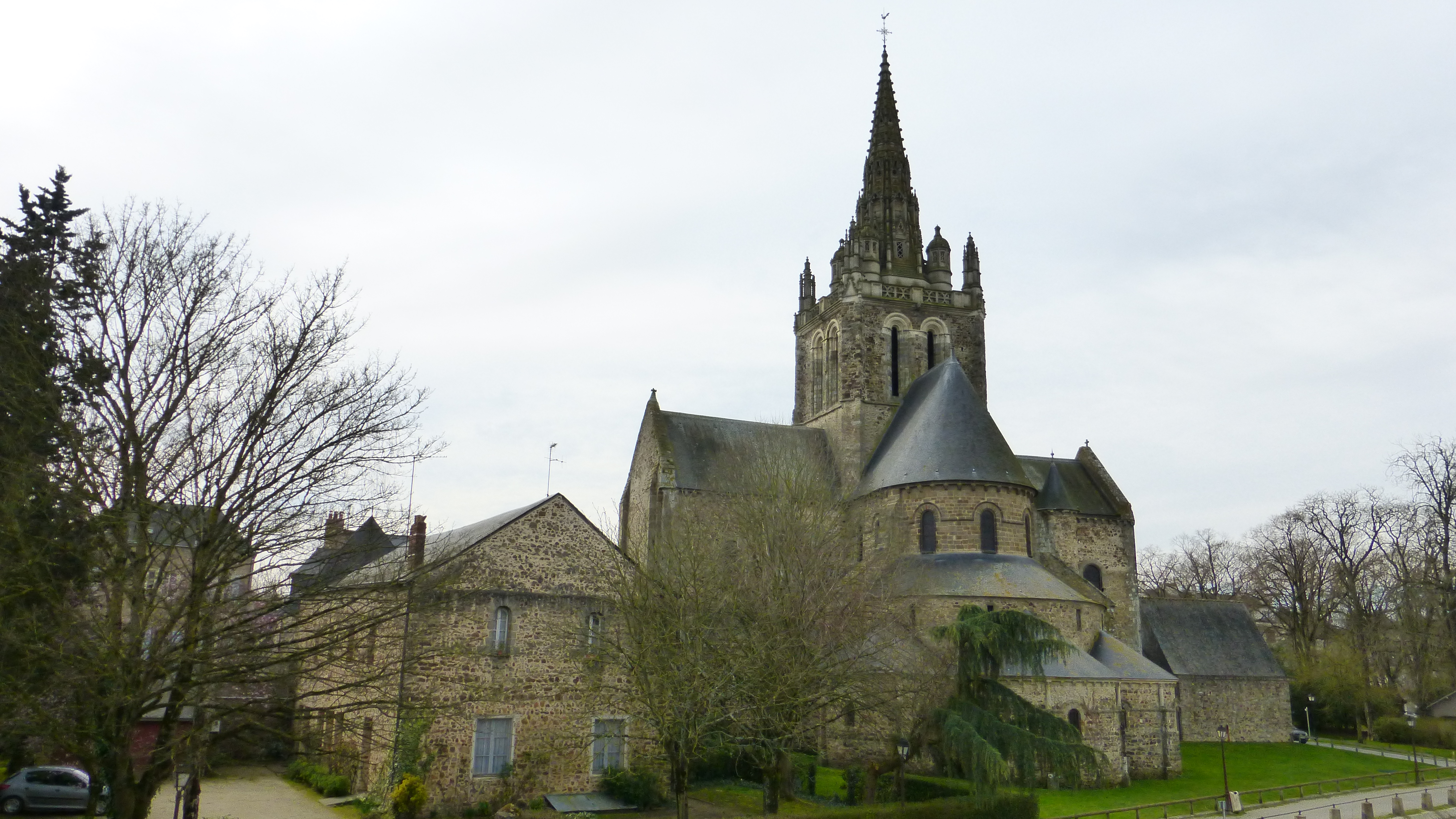 The Romanesque east end is best seen from the Avesnières Bridge. The attractive Gothic-Renaissance spire is an identical copy, made in 1871, of the original which was erected in 1538.
The Romanesque east end is best seen from the Avesnières Bridge. The attractive Gothic-Renaissance spire is an identical copy, made in 1871, of the original which was erected in 1538. 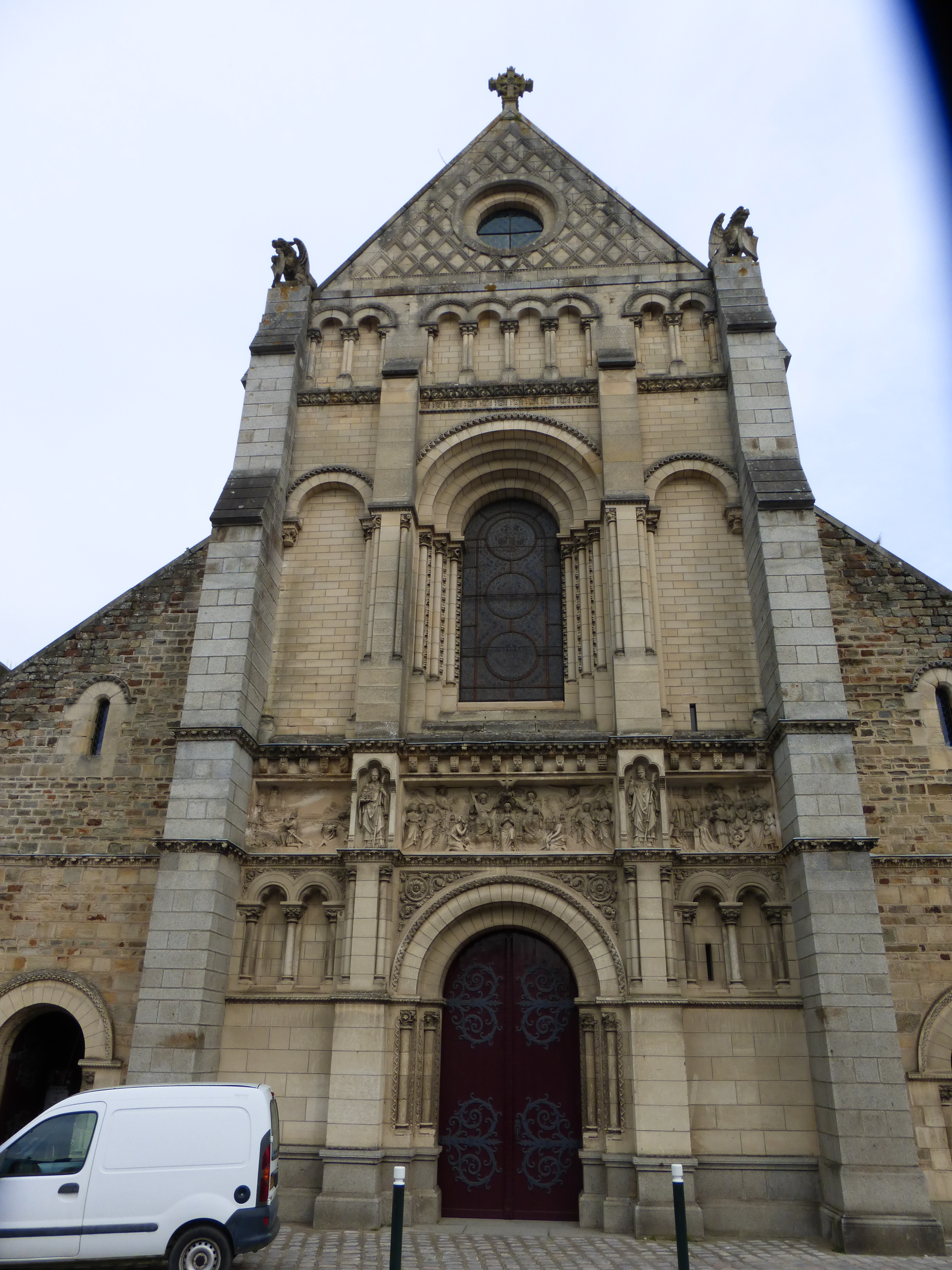
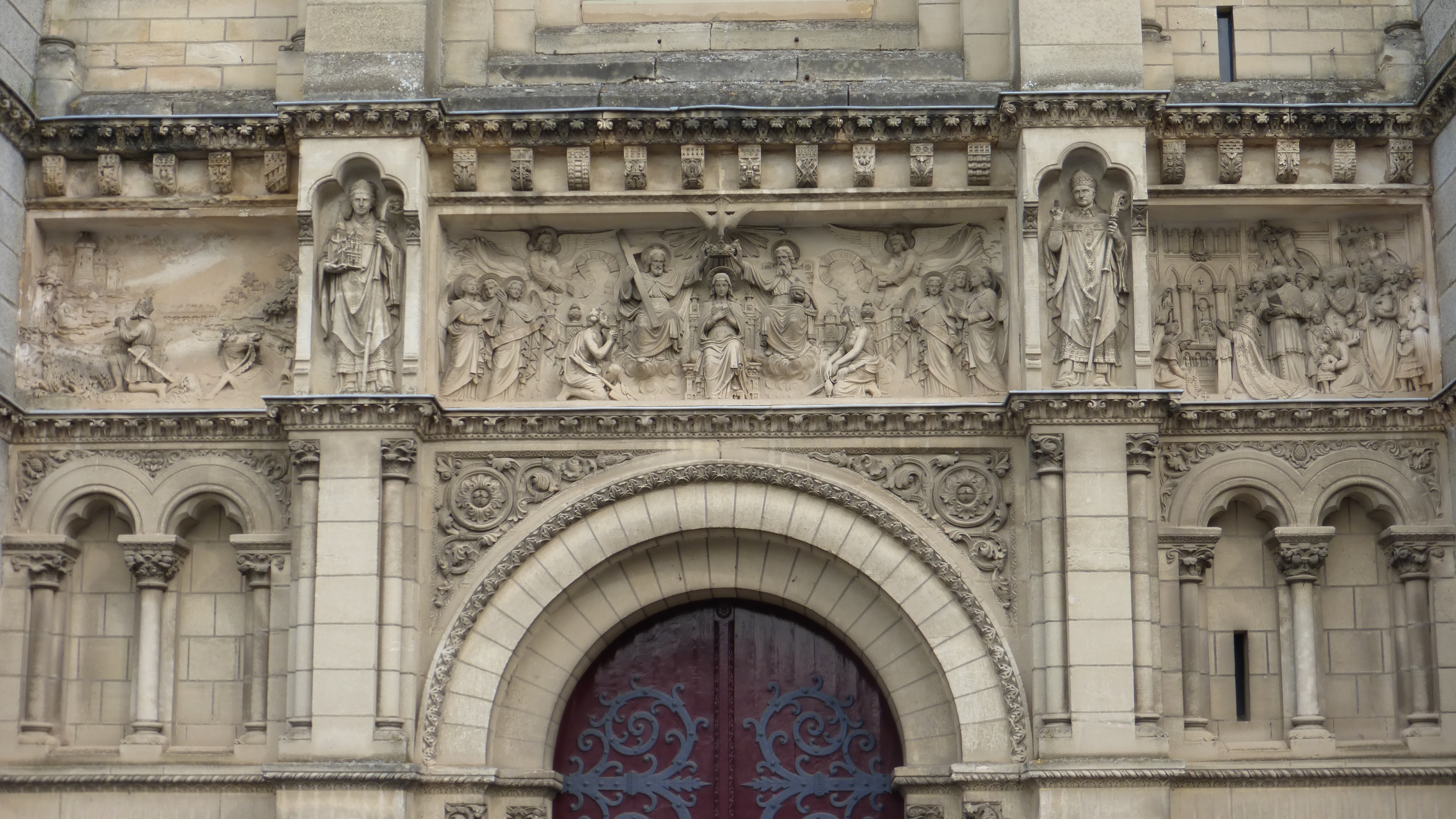 The 19th century restoration, which is quite visible on the west front, has not spoiled the atmosphere of meditation with which this place of pilgrimage is imbued.
The 19th century restoration, which is quite visible on the west front, has not spoiled the atmosphere of meditation with which this place of pilgrimage is imbued. 
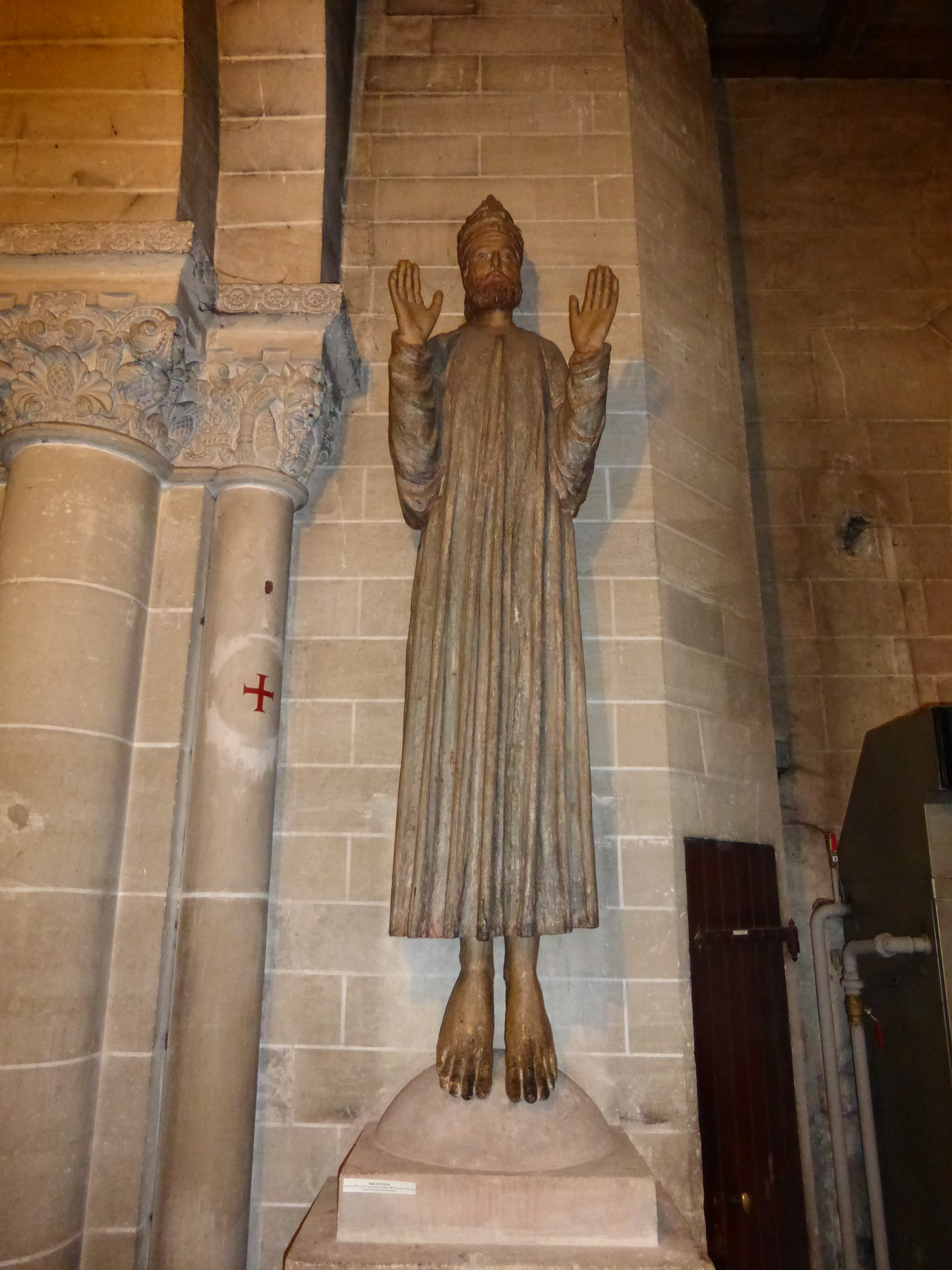 Inside, flanking the entrance, are two colossal painted wooden statues. One is of St-Christopher carrying the infant Jesus from the 16th century while the other is from the 15th century and represents the Holy Savior about to ascend into heaven.
Inside, flanking the entrance, are two colossal painted wooden statues. One is of St-Christopher carrying the infant Jesus from the 16th century while the other is from the 15th century and represents the Holy Savior about to ascend into heaven. 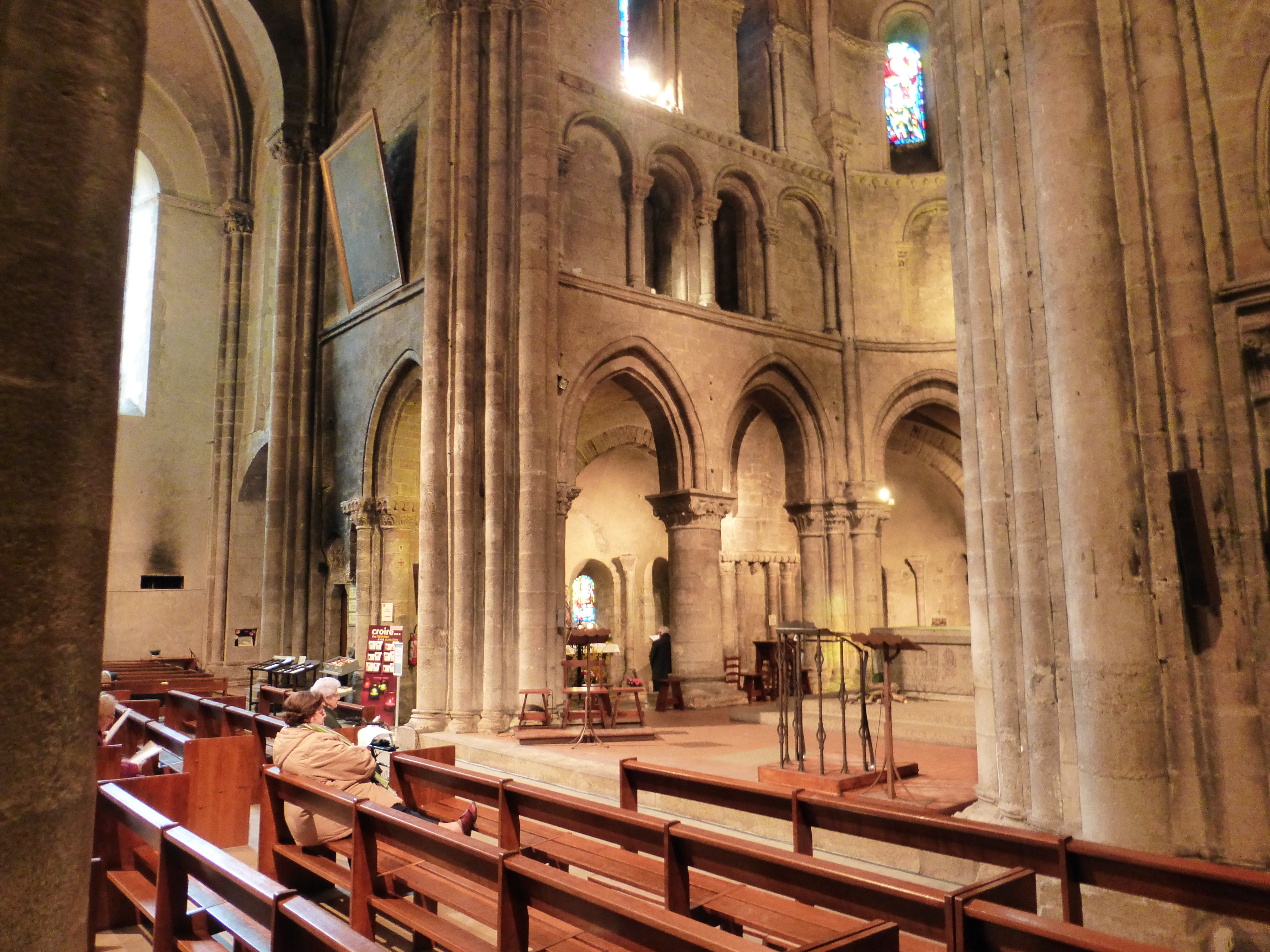 The fine Romanesque chancel consists of three storeys of arches and bays with some very splendid carved capitals.
The fine Romanesque chancel consists of three storeys of arches and bays with some very splendid carved capitals.


